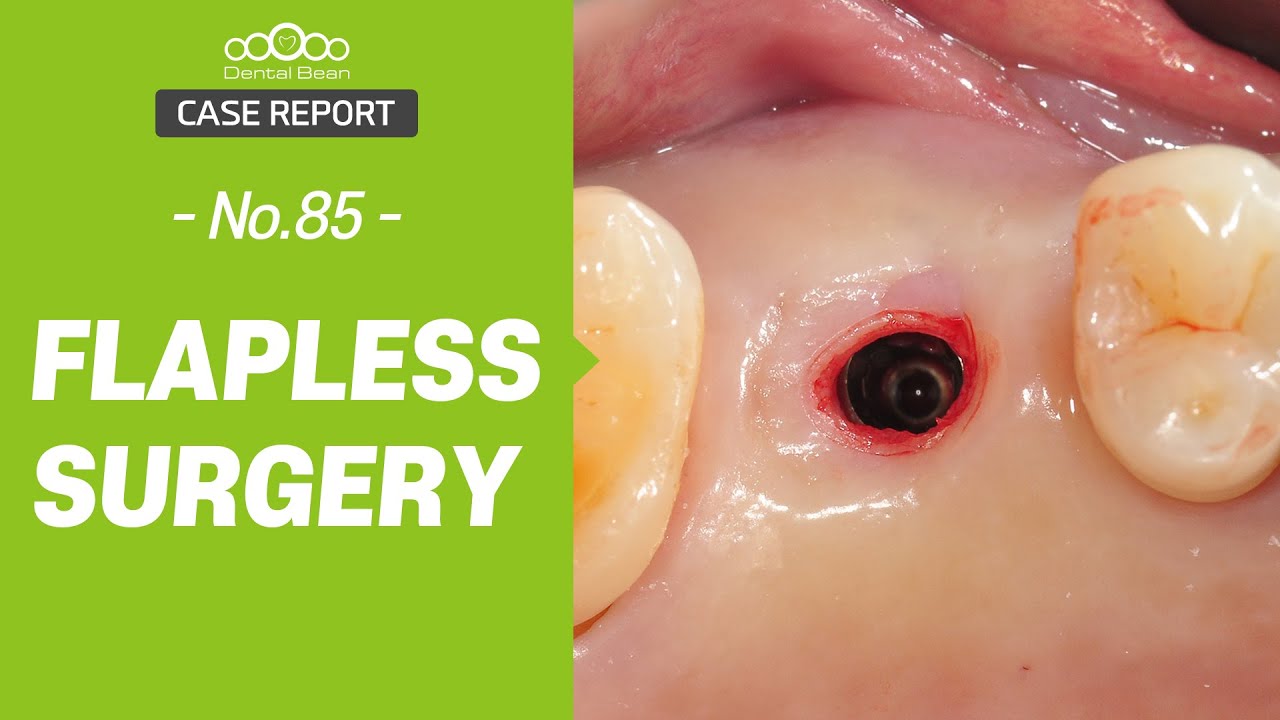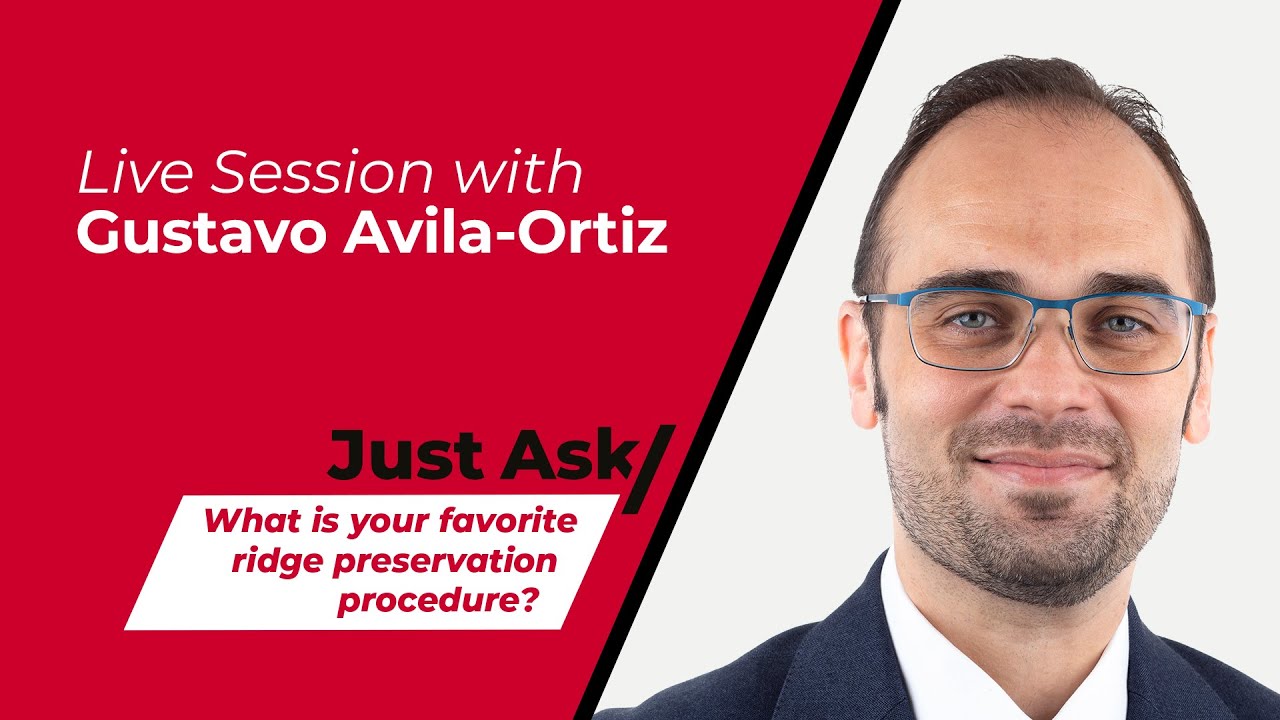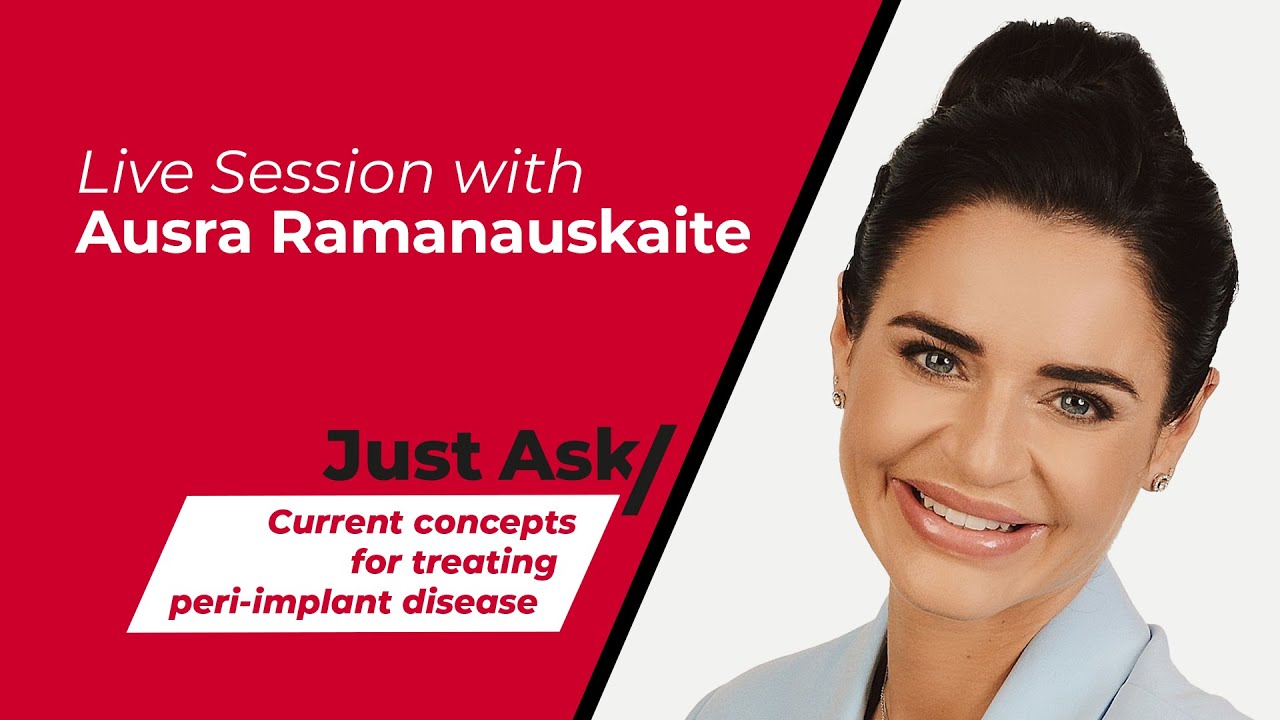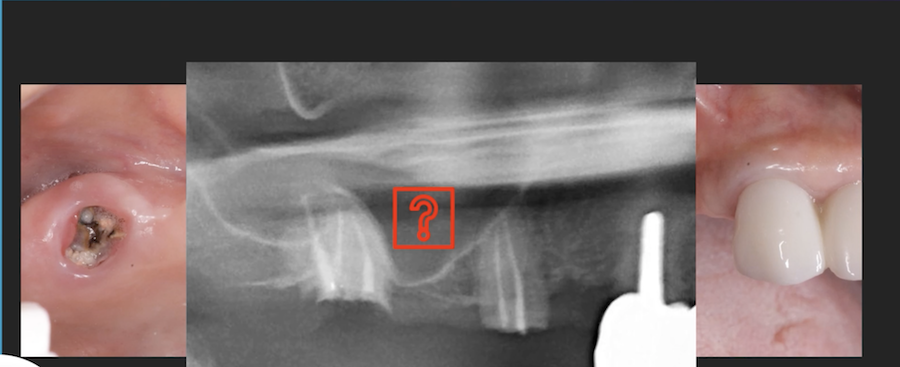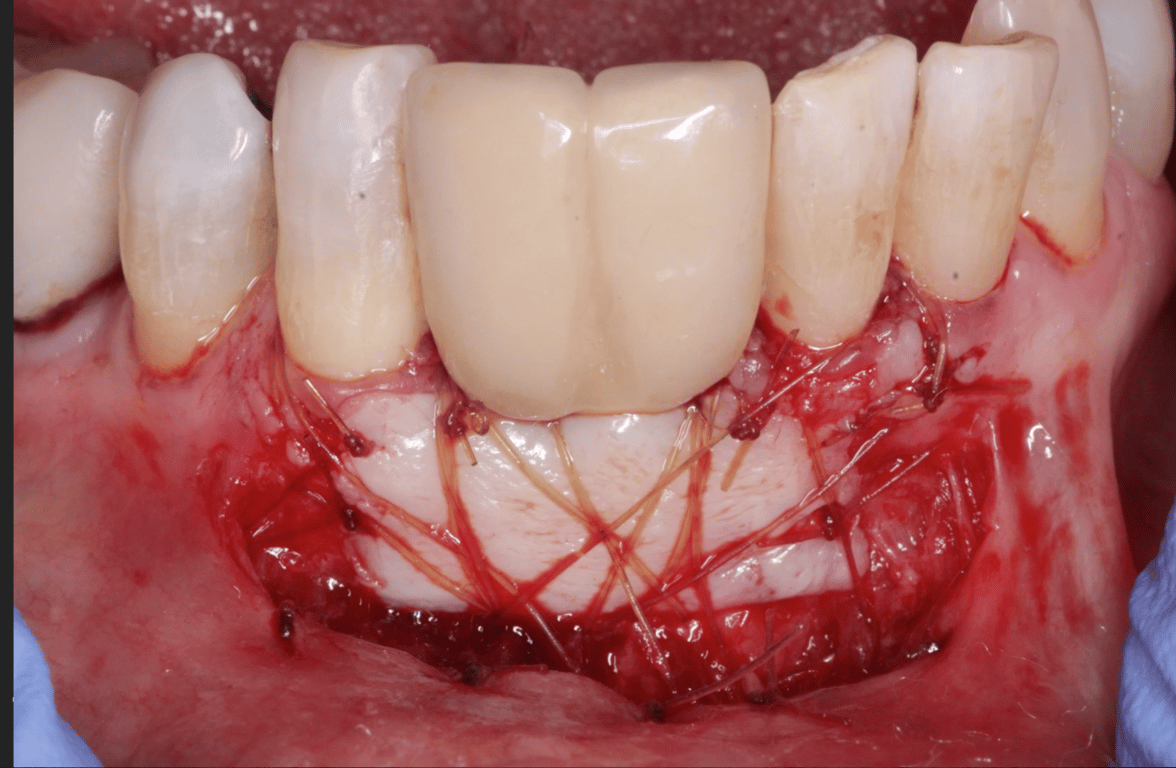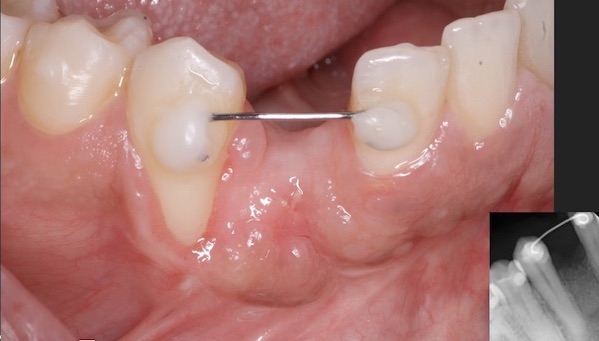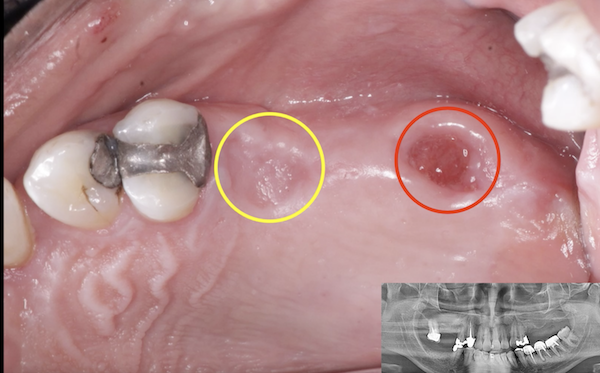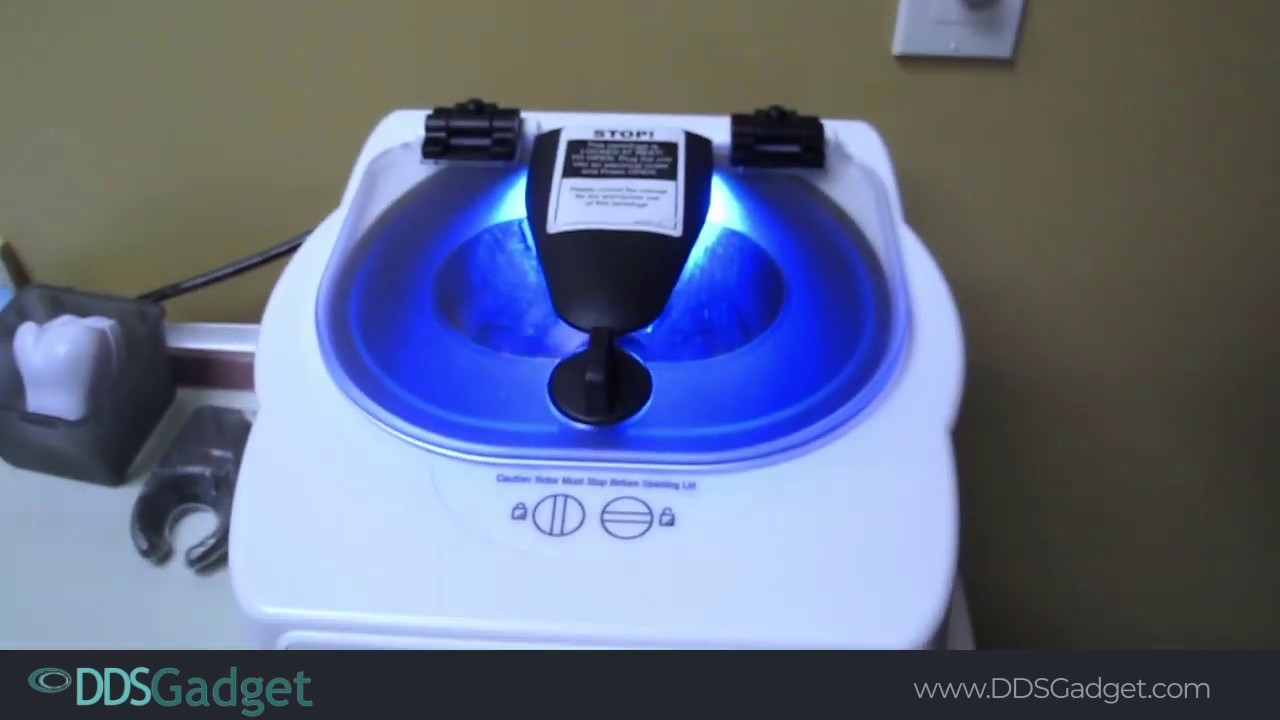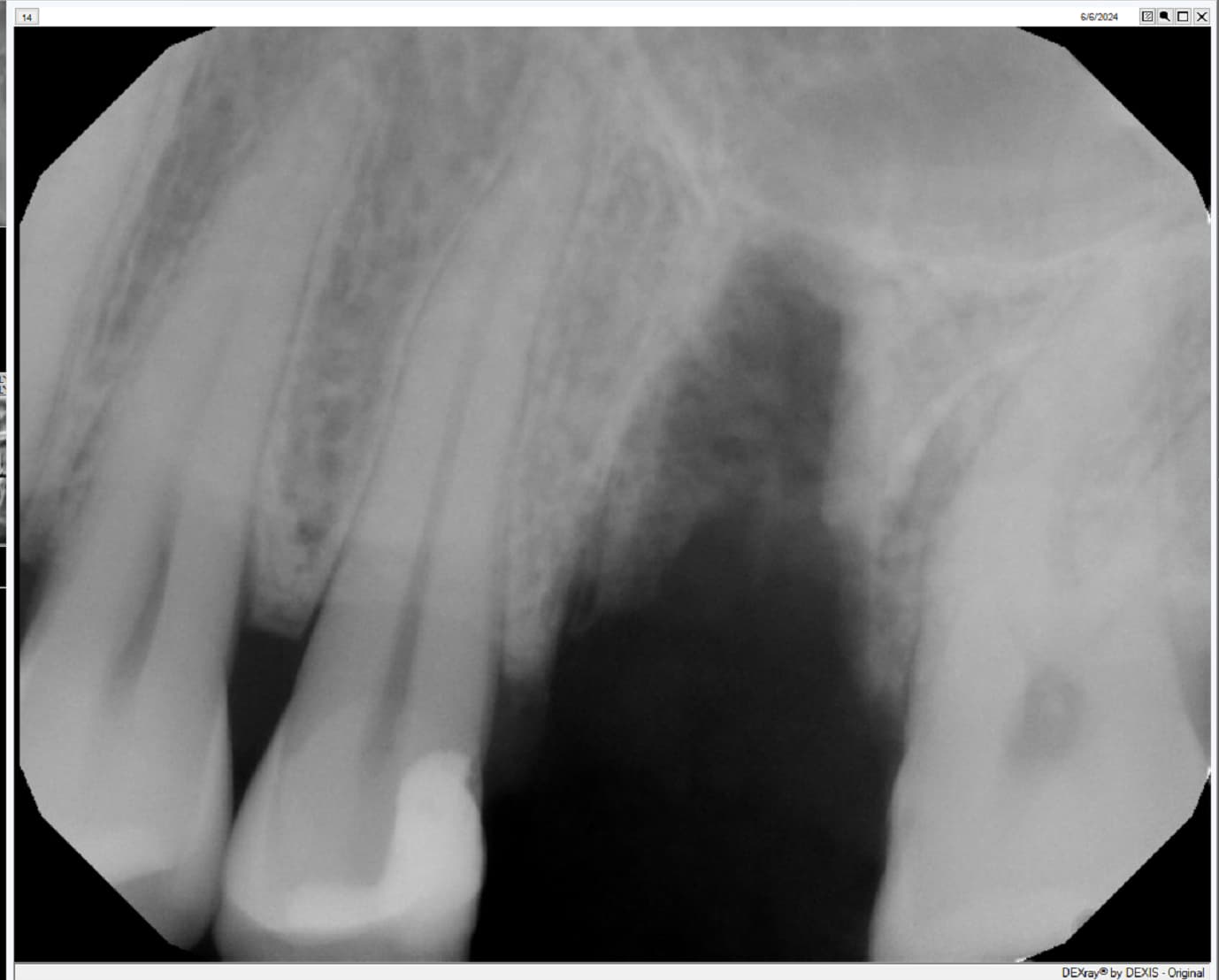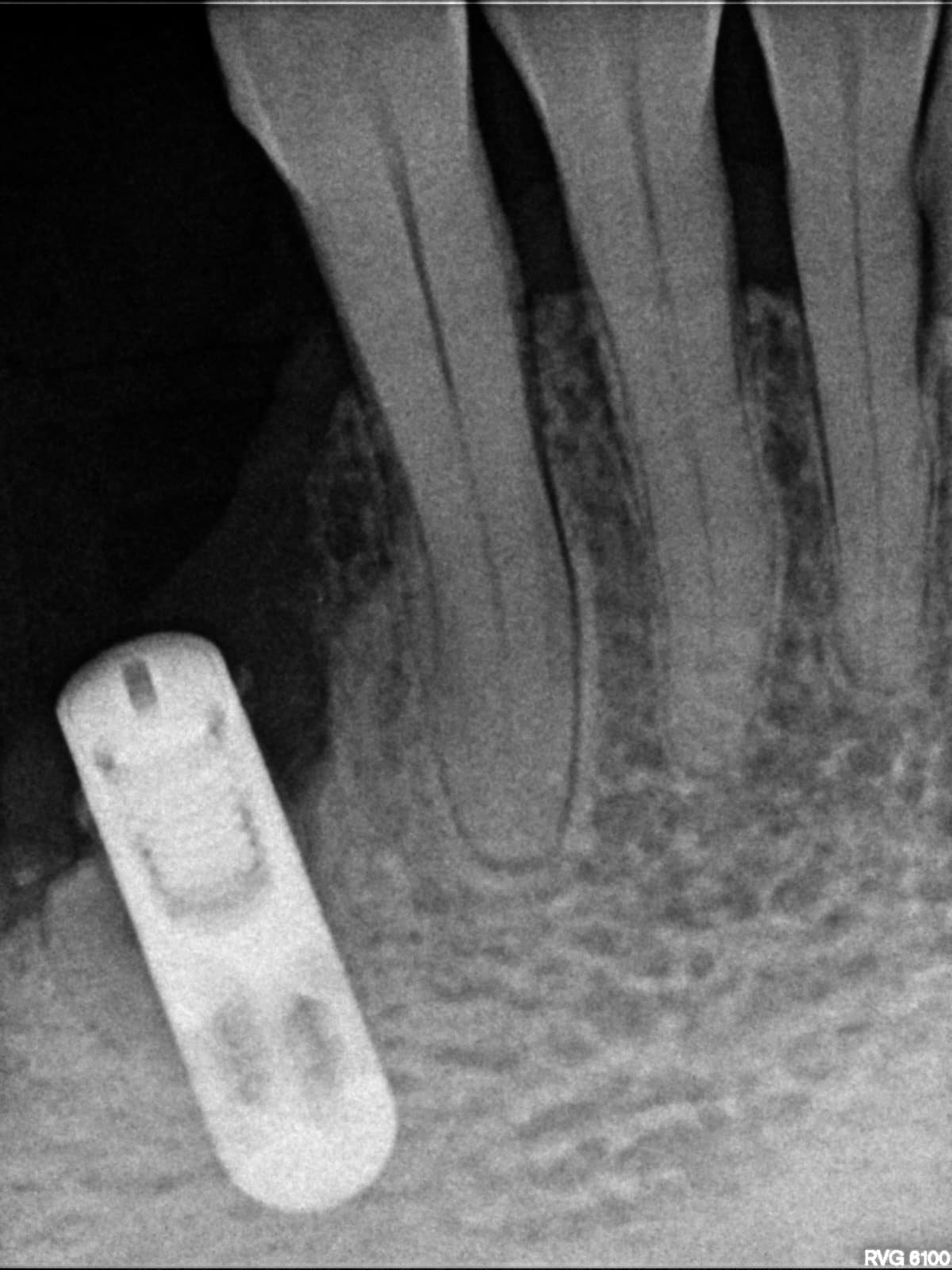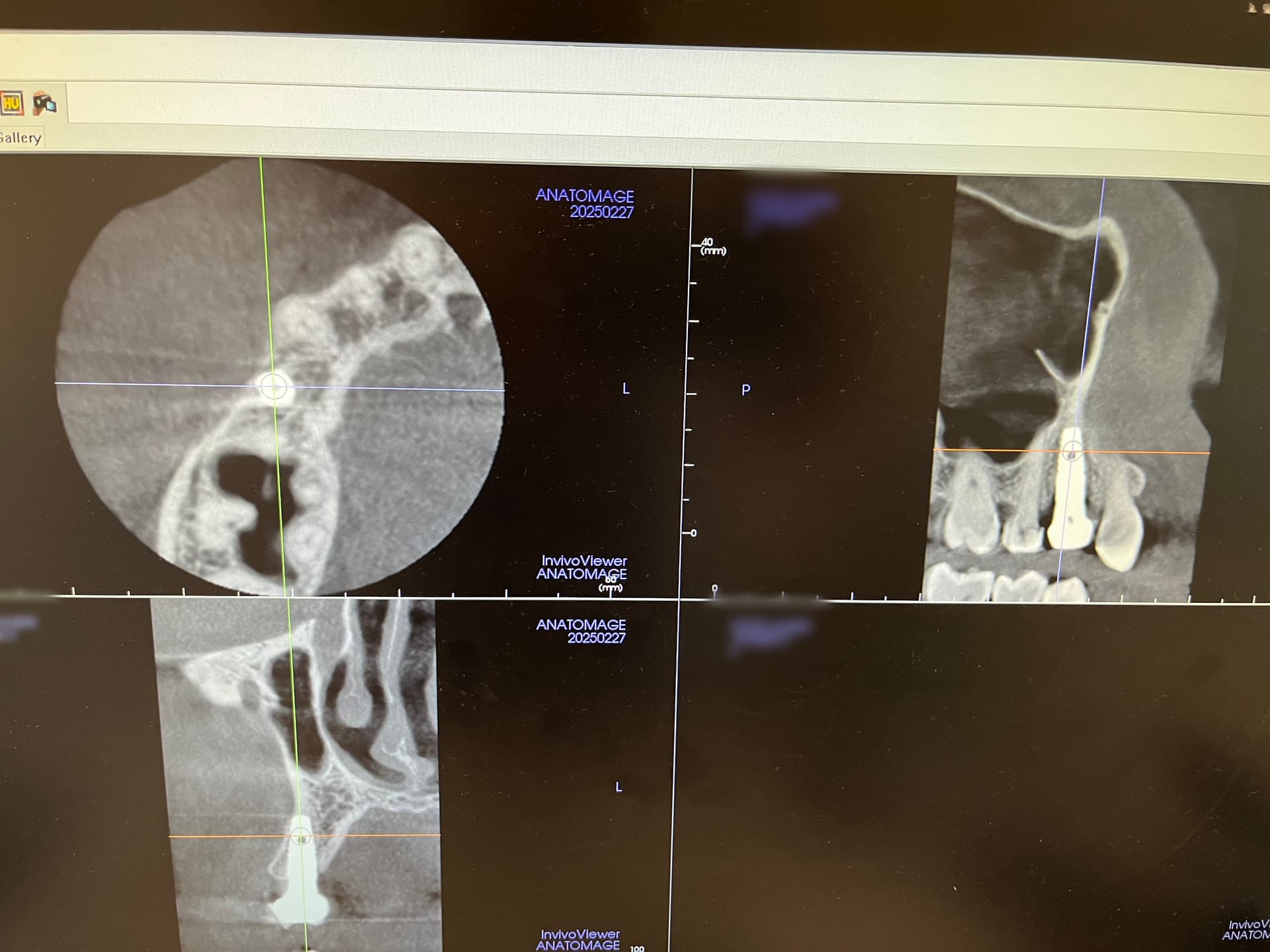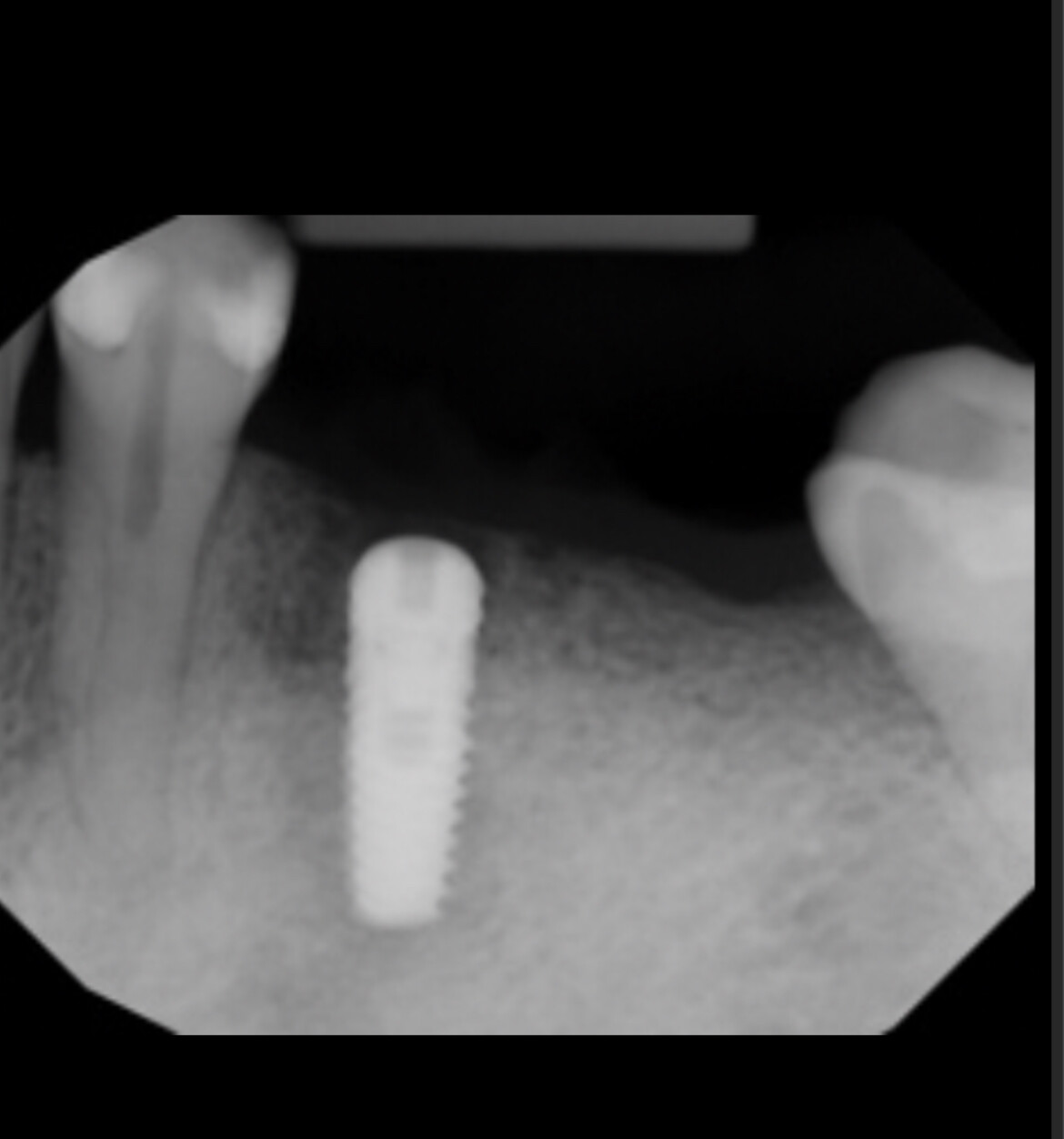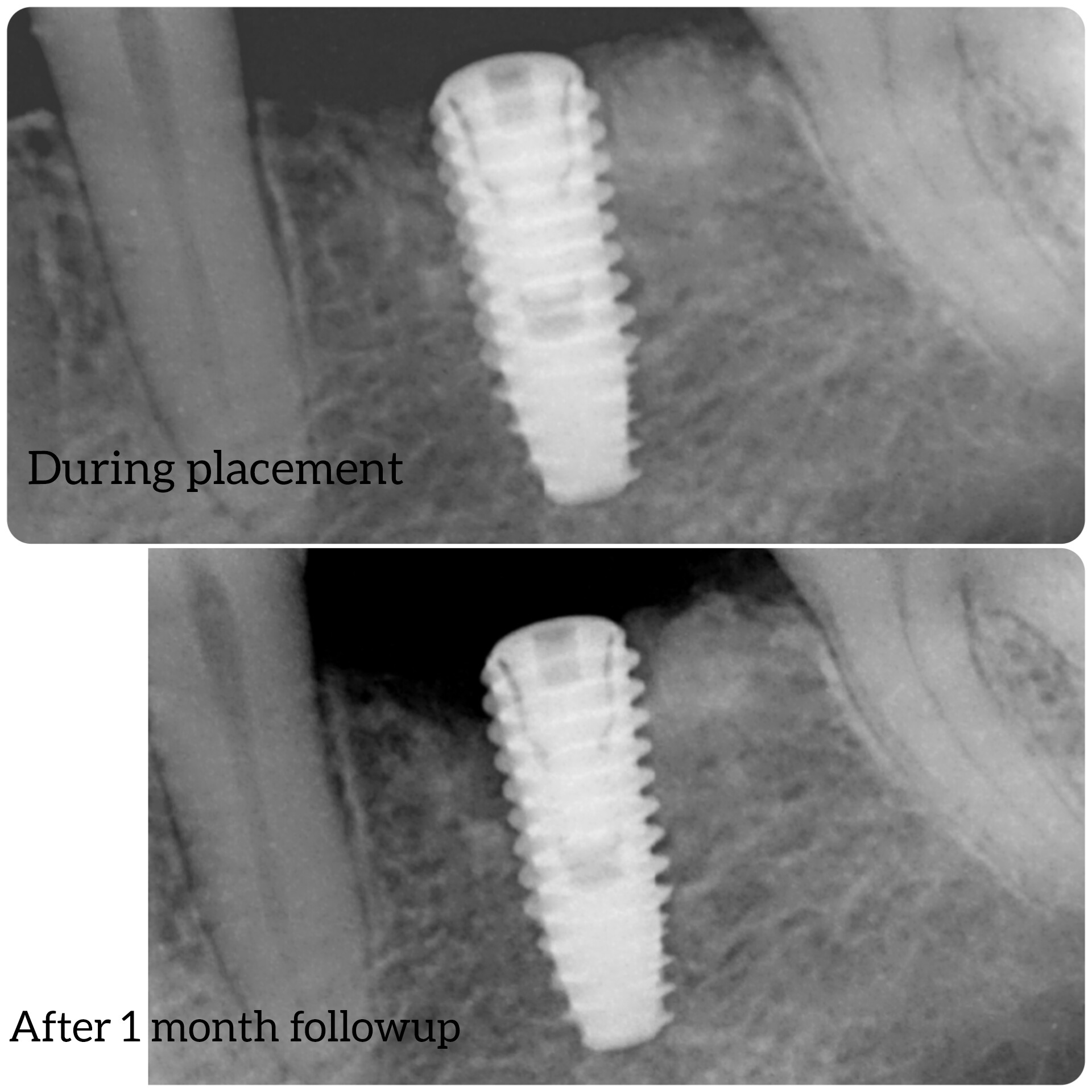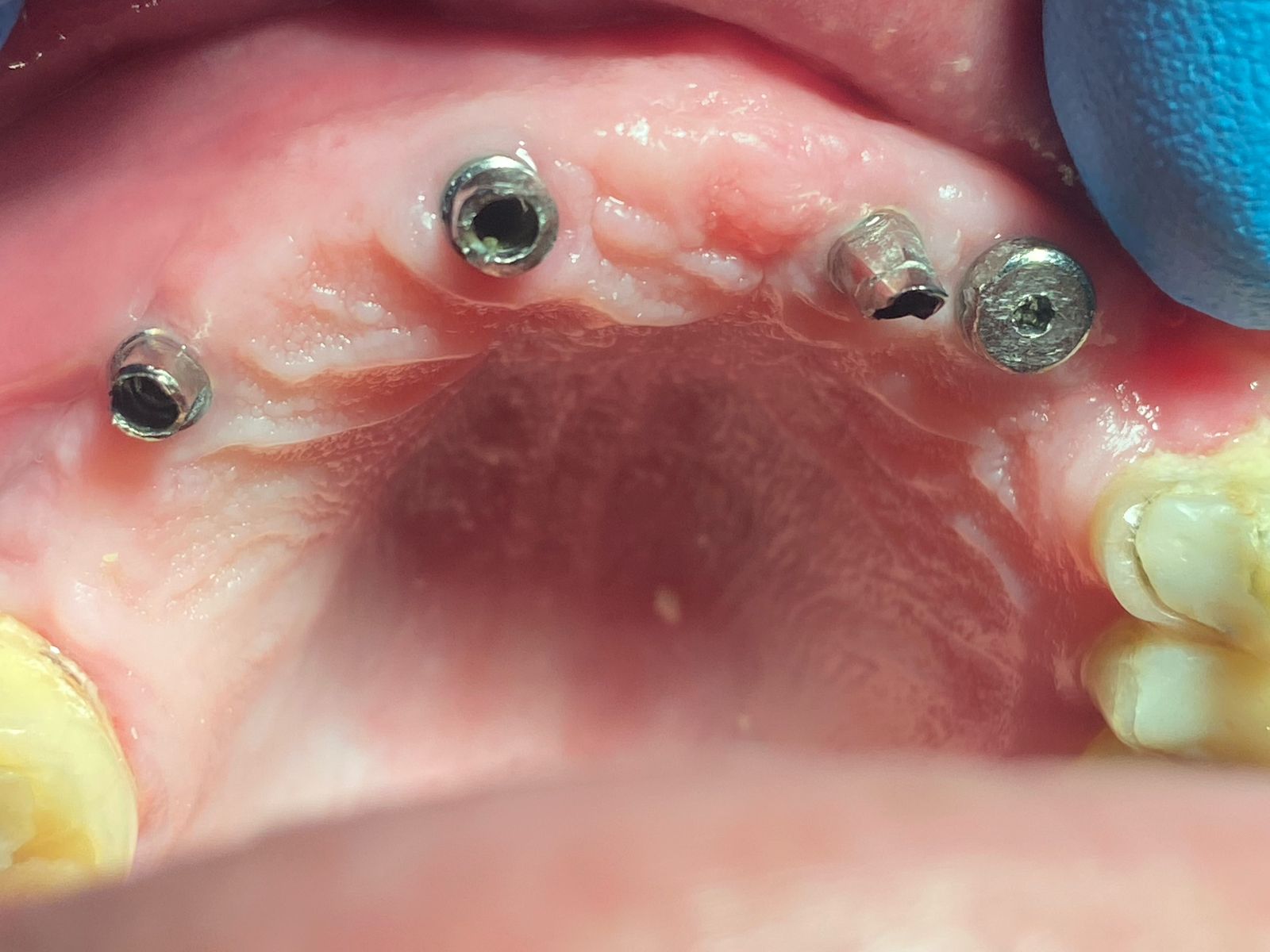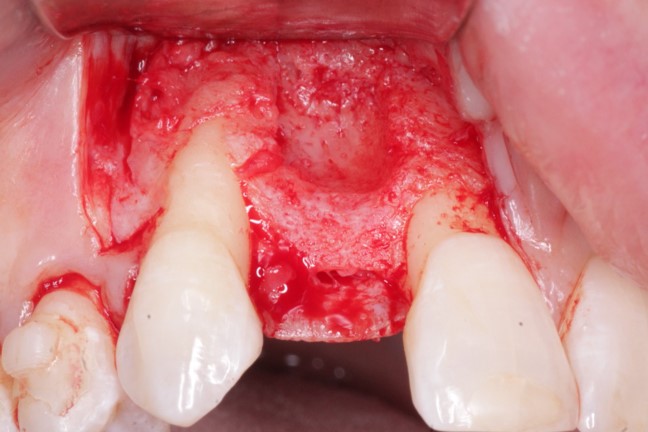Failing Implant: What Treatment Should I Consider?
Dr. D. asks:
I have a patient who presented with a failed root canal treatment in #12 [maxillary left first premolar; 24] that required extraction. At the time of extraction I immediately placed a Xive 4.3x10mm implant. Since I achieved good solid primary stability I placed an abutment and a temporary crown. The patient returned a year later for restoration with a permanent crown and the implant has obviously lost bone support and is loose. What do you recommend? Should I explant and graft the area and install a new implant at that time? Should I graft and wait? Is there any treatment I could use to retain this implant?
![]](https://osseonews.nyc3.cdn.digitaloceanspaces.com/wp-content/uploads/2012/03/wf250-e1332205996584.jpg)
35 Comments on Failing Implant: What Treatment Should I Consider?
New comments are currently closed for this post.
peter fairbairn
3/20/2012
Due to a number of factors ( Sinus , amount of bone loss etc) I would remove the Implant possibly just with fingers and currette very well then graft the site with a synthetic material that is fully bioabsorbable.
Then place in 4 mounths time.
Too risky to place an wider implant at time of removal.
Peter
Dr Chan
3/20/2012
This implant has failed and should be removed early as Peter said. More bone loss will occur if you hesitate. This happens to us all ! (You only get 100% success rate if you don't place implantss :p)
However, I always like to place my implants into sound bone. You are asking too much by doing immediate loading on a compromised site. Nice work though.
John Kong, DDS
3/20/2012
Agreed with above posters. Remove implant, graft and place implant once the socket has healed.
David Angell, DDS
3/20/2012
I agree with the above comments. In that the crown:root ratio is about 1:1, the site is certainly compromised. I would ex-plant ASAP and graft with Minnerross. I would also consider a trans-alveolar sinus lift either now or in 6 months at implant placement. If a sinus lift is considered, I would cover the patient with 10 day supply of Augmentin. I would also place a cover screw at implant placement rather than an abutment and a temporary crown as I suspect, given the initial good stability, that undetected lateral forces or para-functional habits may have caused the failure. Perhaps this is extra cautious but a second failure would be worse. I've had similar failures and have treated them as I suggested without any further issues. Blessings,
Dave
Dr. dan
3/20/2012
If it's loose, it failed and is no longer "failing". By definition, a failing implant is one that is getting worse. Once it's loose, it failed.
So, take it out, graft the area, ideally get a CT scan done in after a few months of healing and replace it with another implant.
Greg Steiner
3/20/2012
Immediate implant placement has failed once so I agree with the previous posters except for using an a freeze dried allograft. In this case you have a wide implant in the site so your next implant will be placed in graft material. Because mineralized allografts are nonresorbable and produce sclerotic bone with no vitality histologically you will have chunks of bone graft material encased in mineralized tissue with no osteoblasts or osteoclasts. You have no ability to extend past the graft material in this case so you would have an implant that is like a screw in wood rather than an implant that is bonded to the bone by integration. Use a resorbable graft material and put the next implant in bone. Greg Steiner Steiner Laboratories
Dr. dan
3/20/2012
That's not true. Whether it is a mineralized or demineralized xenograft or allograft that is used to preserve that space where the implant will be removed, histology will show vital bone surrounding the implant just as is true in normal extraction sockets. If it were me, I would a mineralized xengraft that doesn't disappear very quickly and therefore maintain the ridge longer than a demineralized allograft.
gregory steiner
3/20/2012
Dr. Dan If you force the body to retain xenografts or allografts and mineralization occurs sclerotic bone is produced. It is called sclerotic bone by pathologists because the word sclerotic means a hardening with the inability to adapt. When you put foreign objects in bone that are not biocompatible such as xenografts or allografts an inflammatory reaction occurs that results in sclerotic bone. The same thing happens in arthritis when bone grinds on bone producing an inflammatory reaction that results in sclerotic bone. Likewise the same thing happens in your arteries. If you just close tissue over a xenograft or allograft the body will successfully spit out the graft material and you will have vital bone in the socket. If you cover with a membrane and force the body to retain the graft material dense mineralized sclerotic bone is produced that is devoid of osteoblasts or osteoclasts with minimal to no vascularity - a dead zone walled off from the rest of the body. Allografts and xenografts are nonresorbable so if you force the body to retain this material you will have exactly what you put in which is dead bone. Mineralized xenografts never disappear. Give me your email address and I will be happy to send you the histology so you can see for yourself. Aloha Greg Steiner Steiner Laboratories [email protected]
rsdds
3/21/2012
check the literature on mineralized freeze dried bone , youre giving false information...
greg steiner
3/22/2012
Mineralized xenografts or allografts never resorb. If it is dead bone from the extraction socket wall when a site is not grafted or dead bone that you put in the socket the body handles it the same way and that is by exfoliating the particles slowly over one to two months. If you trap the material with a membrane and the body cannot get rid of the non biologically compatible material you will have a socket filled with dead bone encased in sclerotic bone. Sclerotic bone is formed when inflammation is present as a result of a non biocompatible material. The dead bone particles are encased in sclerotic bone in an effort to isolate it from the rest of the body hence the very low vitality with no remodeling. The same process of sclerotic bone formation occurs in arthritis and in your arteries as a response to inflammation. Contact me and I will share the histology with you. Greg Steiner Steiner Laboratories
grg steiner
3/22/2012
rsdds what about my coments are wrong? Greg Steiner
Robert J. Miller
3/20/2012
While I agree with the need for removal of the failed implant, I disagree with virtually all of the subsequent treatment that is recommended. Let's go back to the original post. The surgeon claims to have had good initial stability of the implant. But in this case, how was initial stability determined? In virtually all of these cases, what the clinician is measuring is seating torque. Torque is NOT a measure of initial stability. Initial stability is resistance to displacement after an implant is placed. When you have an implant placed with HIGH torque, within 7 days there is a significant LOSS of intial stability as a result of bone remodeling. In a case of extraction/immediate placement of a failed endodontically treated tooth, there tends to be a dense cortical bone layer at the root/bone interface. If you do not have sufficient bleeding at the implant/bone interface, you need a prolonged period of healing before the implant can be loaded. This is a typical radiograph of a case that was loaded too soon. But, on the contrary, the fibrous seam that develops around the implant actually INCREASES blood flow to the bone. Wherever possible, debridement and placement of an implant of slightly larger diameter has an extremely high success rate, as the biology of the osteotomy has now been altered. Better clinical sequalae: Use an implant with lower torque value and less microfracture of bone (i.e. Intra-Lock Blossom thread design), make sure you have a bleeding osteotomy, and use a trans-floor approach by upfracturing the sinus floor to engage cortical bone (no graft needed).
RJM
Dr Samir Nayyar
3/21/2012
Hello
Do remove the implant, do sinus lifting surgery, graft and wait for 6 months. Redo implant with no temporary or healing screw, just cover screw & again wait for 6 months before loading.
Have a nice day.
jg
3/21/2012
just a thought....Is there a possibility, that the membrane, was perf. and not dealt with properly....
Dr. dan
3/21/2012
Possibly, but sometimes even a small perforation isn't the end of the world and should heal on its own.
LD Singer
3/21/2012
Most things have been covered here except that a good chance of the reason for failure may be bacterial infection creeping over from the adjacent root canal. I have had implants fail next to root canals before. While the RCT may look good on the PA it may have some infecious/bacterial activity around it that gets to the implant and causes the failure
peter fairbairn
3/22/2012
Dear Dr Millar whilst being a firm admirer of your lateral thinking approach as well as always very diligently reading what you write I feel there may be other issues here and theplacement of an bigger implant may not br the best solution in this particular case.
Firstly the Implant was probably placed flapless ( as it was immediate and immediate load ) , sure whilst this was fashionable a few years ago I now tend to be wary of this approach. The bone width may have been an issue as well as placement immediately into a failed RCT site as well as the possibility of an acute flare up of the adjacent rct site .
Whilst any perforation of the sinus lining would heal in a few days the previous failed RCT could have complicated that.
At the time of placement many risk factors were taken on and now the implant is lost, so for the patients sake a more cautious approach would be warrented as to not lead to a mjor loss of confidence.
I agree on compression forces especially when using flared implants with micro threads leads to bone loss but only to a certain level and this failure could be attribted more to infection or a parafunction issue.
Regards
Peter
dr. dan
3/22/2012
What happens to graft material? It's either resorbed, replaced, or fibrously encapsulated.
Allograft autographs, alloplasts, and xenografts mineralized or not are osteoconductive. They don't suddenly come alive. Your own bone will grow around it or the body will get resorb it and get replaced or soft tissue will encapsulate it.
Look in the lit search at bone cores after grafting. Most mineralized xenografts and allograft show a scaffolding effect for bone. And it works when implants need to osseointegrate. It is a completely false statement to say the no implants can osseointegrate if placed in grafted sites.
Greg Steiner
3/22/2012
Dr. Dan The only graft materials you mentioned that are resorbed are autografts. An osteoclast dissolves the mineral component and absorbs the protein component of bone and the matrix proteins are transported through the osteoclast and expelled into the intercellular fluid. When an osteoclast encounters antigenic proteins from an allograft resorption stops and the osteoclast leaves the area. This same process occurs with bio-oss. High temperature xenografts are not resorbed because they are to hard to dissolve. I did not state that implants do not integrate in grafted sites. I do believe that implants do not integrate in dense sclerotic bone due to a lack of osteoblasts. Greg Steiner Steiner Laboratories
dr. dan
3/22/2012
I want to make a clarification. If the implant is not put in stable bone and only use grafting material to hold it in place, you will most likely not get osseoingration. However in a previously grafted site that has healed, implants have been successful.
E. Richard Hughes, DDS, F
3/23/2012
I suggest a very conservative approach. Remove the implant, degranulate, detox, decorticate and place a resorbable graft material. Place an implant at a later date. This site has a significant history.
Sb oms
3/24/2012
Greg Steiner-
I have done a lot of socket grafting with allografts, any many immediate implants with allograft. It appears to work, and my cases- hundreds per year- seem to work and are stable.
This is not to say that I haven't had my doubts.
I have seen some of my cases where the graft was essentially "a well tolerated foreign body"
I have also seen some cases - albeit it very rare - where an allograft didn't work at all. If anything it delayed wound healing.
As a busy oral surgeon, I have a very good feeling for healthy vital bone vs graft induced garbage bone.
So here are my questions for you-
1. What's happening in all of the ceases where the allografts work, vs when they don't work?
2. Where is your research about the non-resorbale quality of allograft?
3.
greg steiner
4/3/2012
Sb oms
I am sorry for not replying sooner. I appreciate your reply.
1. The mechanism of healing of allografts action is what I have termed antigenic ossification(bv will like this one). Because there is no tissue typing the body mounts an immune response to the allograft. The result is a deposition of mineral to encase the antigenic material and isolate it from the rest of the body(sclerotic bone). Success and failure is dependent on the degree of antigenicity. If is a fairly close match the body will spit our as much and possible and encase the rest. This is your success. If it a poor antigenic match granulation tissue will form and that is your failure.
2. Resorbability? Every research paper I read on allografts cite the percentage of retained graft material. Every time I open a patient that has had an allograft placed it is still there and I need to remove it I want to augment the area with new bone.
The only time you have histology without allograft is because it has been expelled. Review your past graft sites and you will see the granules present on a good digital radiograph. I will suppy references if you like.
3. Demineralized freeze allografts are mostly organic. Mineralized freeze dried allografts contain the matrix proteins that was secreted by the osteoblast as what we call osteoid which is mostly collagen. You have to heat to very high temps to burn off the organic compounds from the mineralized graft.
4. Thank you for your enquirer. I prefer to not broadcast about our products here but you can see them at Steiner Laboratories and feel free to email me if you want to see some of my allograft histology.
5. They would not be popular if they did not work. Some of their success is related to the density of the mineralization but with increased density comes decreased vitality and the inability to respond to changes to load found in normal bone. Take a good digital radiograph and you will see dense sclerotic bone rounded up in a ball surrounded by a radiolucent boarder. The interradicular bone will have been resorbed. When using a biocompatible bone graft you will maintain the interradicular bone and have the socket fill with bone as it heals. This is a clinical way to determine if a graft is or is not biocompatible.
Sb oms
3/24/2012
Sorry- continued-
For greg Steiner
3. You talk about host bone cells recognizing proteins in the allograft
- I was under the impression that an allograft as today's standards control are inorganic and contain no proteins to signal antigenicity.
4. I would like to try a few cases using what you consider a 100% resorb able graft. What is your method and products of choice?
5. Allografts do work great in implant dentistry. I routinely have to tap maxillary sites to place implants even after four months of socket graft healing. Success rates both short and long term in the 98-99% range.
How do you explain this?
dr. dan
3/24/2012
Thank you sb oms
Peter Fairbairn
3/25/2012
Sb Oms as you well know BTcP has been used since the 70s in Implant sites and CaSo4 even longer I think but these materials have evolved hugely since then and from the orthopaedic field there has been a greater understanding of them ( Porosity , patricle size , shape, addition of ZPC etc ) .
They are fully bio-absorbed over time dependant on the type of material and the patient physiology but they are FULLY replaced by host bone . We have countless core samples showing this and over my last 1,000 grafts have noticed better ( more radiographically dense bone ( we know there is no residual graft material present )) over the longer period of 7 to 8 years.
Yes we loved the allograft of the late 80s and early ninties where there really was an active component but the boys from NJ helped sort that out.
As I have said I used to use Rocky until that moment but I feel much better using these newer synthetic materials ( getting great results ) and my patients are definately happier , and they are my primary concern.
So call it patient driven in a way , but we are both happier as a result.
Regards
Peter
Peter Fairbairn
3/25/2012
Dr Dan yes the grafts are merely a scaffold , the body regenerates through angiogenesis thus bio-absorbed material provides space for further vascular ingrowth , timing is the key , work with the body .
ZPC may up-regulate the host response , but esentially the body wants to heal lets help it.
Peter
SBoral surgeon
3/26/2012
Peter Fairbaum?
What is ZPC? What is your basic technique?
What are the names of your products for standard socket preservation?
I'd like to try a few and see results for myself.
Thanks
-Sb oms
Dr. Bone
3/26/2012
Dr. Steiner,
You say allografts are biologically incompatible?
What allografts are you using? I used a minimally processed allograft that is
retains, collagen and proteins that aid the remodeling process.
I get vital host bone from through the use of these tissues.
Maybe you've been using the wrong allografts?
My advice to everyone is to go your research, if your allograft is terminally sterilized, you're better off using synthetic grafting materials.
greg steiner
4/3/2012
Dr. Bone
The less processing of the allograft the more antigenic. The only way to have a somewhat biocompatible allograft is if its antigens are tissue typed for biocompatibility. If you are getting a new kidney it has to be a match and you still need extensive medications to prevent rejection. Why do you think your allografts are any different? Greg Steiner Steiner Laboratories
peter fairbairn
3/27/2012
Dear SBoms may basic techniques ( used daily ) is traditional membrane free , autogenous free grafting with materials that set and are thus stable and soft tissue cell occlusive always placing the Implant ( the best possible graft itself ) at the same time irrespective of the size of defect.
ZPC is Zeta Potential control whish essentially the shifting of the is-electric potential so the material effectively has a negative charge thus attracting substantial proteins such as Osteopontin , Osteocalcin , CBFT etc ( all positive in charge ) which in turn lead to a substantial increase in the number of Osteblasts at the site .
Hundreds of thousands of Orthopaedic procedures done and very impressive core samles from dental socket grafts showing 80 to 90 % material turnover with new bone formation at 8 weeks .
Best to e-mail me ( [email protected]) and I can send an article or two of mine published in Europe which will best show the ideas.
Regards
Peter
UMDNJ2004
3/27/2012
Sounds like Fairbairn and Steiner are business partners.
No allografts in Europe?
peter fairbairn
3/27/2012
Never met him although would like to sometime.
Used allograft for many years
Peter
Peter McKenna
3/28/2012
A very interesting discussion.
The failure of implants is often very difficult to determine.
I must say that I use BioOss routinely and so far have experienced no failure.
With failures I have removed the implant scraped out the socket and placed
an implant of greater diameter,
I use Bredent which has 5.5 mm diameter implants.
MD
5/18/2012
In my opinion the failure of this implant is because of the excess lateral occlusal load put on the implant...the inclines of the crown were at almost at 45 degree angle..

